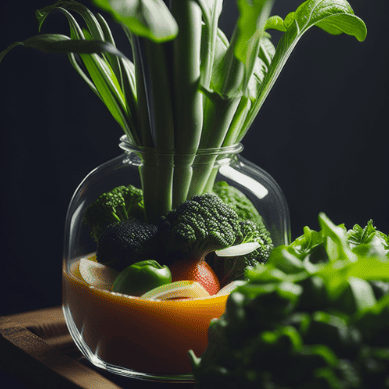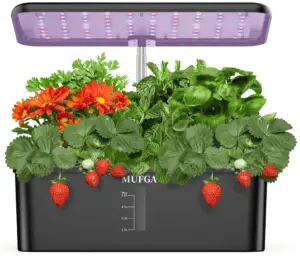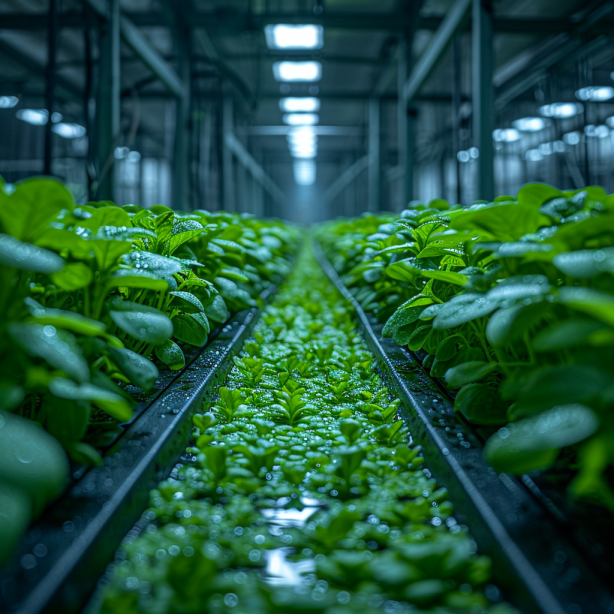
According to agricultural scientist Dr. Emma Jones, “Hydroponics offers a sustainable, space-efficient way to grow nutritious produce.”
As populations grow, finding innovative ways to feed people is crucial.
Hydroponics offers solutions by growing plants in water instead of soil.
This method uses less water and space while eliminating soilborne diseases and pests.
Plants directly absorb vital nutrients from mineral-rich waters, often yielding faster, healthier growth and higher yields year-round.
Intrigued? Keep reading to discover how this soilless cultivation functions, its benefits and downsides,
Suitable crops, and how you can grow tomatoes, leafy greens, herbs,
And more hydroponically at home with a basic starter kit.
KEY TAKEAWAY
Hydroponically grown food, what to know?
Hydroponically grown food offers sustainable, nutrient-rich produce, ensuring a year-round supply and promoting eco-friendly agricultural practices. (1)
What is Hydroponic Farming?
Hydroponic farming is a way to grow plants without soil.
Instead, plants are grown in water or mediums like gravel with added nutrients.
This allows precise control over the environment – light, temperature, pH and nutrients can all be regulated.
Plants grown hydroponically tend to grow up to 50% faster than soil grown.
Tastier too! I once tried a hydroponically grown tomato – so juicy and flavorful.
Hydroponics enables year-round local production of nutritious greens…
… and veggies in controlled environments safe from pests, pollution and unpredictable weather.
The key is the nutrient solution – a specially mixed aqueous blend of mineral salts tailored to each crop.
This solution delivers nutrients directly to the roots.
With hydroponics, the same land can produce up to 10 times more food using 90% less water….
… than traditional farming! It’s an efficient, sustainable way to boost local food security.
I love visiting the hydroponic farm down the street.
The lettuce is so crisp and green under the purple glow of the grow lights.
It’s amazing how they can grow such healthy, pesticide-free produce right in the heart of the city!
Benefits of Hydroponically Grown Food
Higher Yields
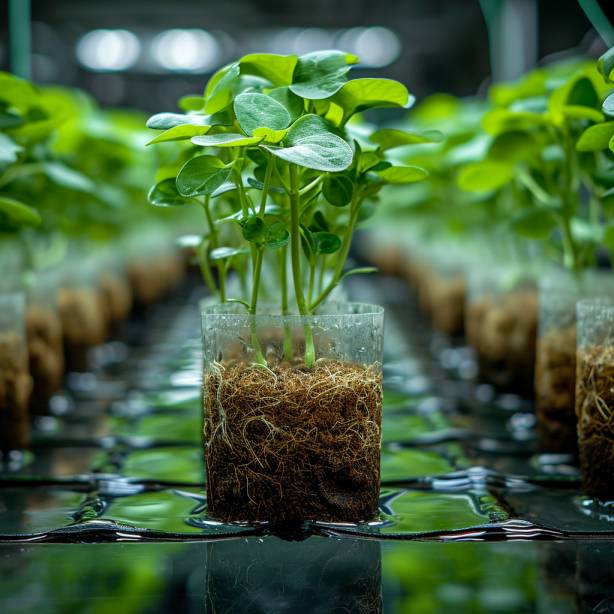
Hydroponic systems yield up to 5 times more produce than traditional soil farming using the same land area.
Clever setups like nutrient film technique recirculate water for maximum efficiency.
With tailored nutrients and grow lights, plants grow nearly 50% faster too – harvests every 2 weeks!
Minimal Land and Water Usage
As populations grow, arable land and freshwater sources are disappearing.
Hydroponics offers a sustainable solution – producing higher yields with 90% less water and smaller footprints.
That saves land and water for other uses.
Nutrition and Food Safety
Plants only absorb essential nutrients from hydroponic systems, leading to super nutritious fruits and veggies.
And without soil, there’s no soil-borne diseases or pests.
No messy pesticides needed!
Instead, plants grow in clean, controlled environments safe from contaminants.
That means healthier, safer foods for communities.
I love my weekly delivery of locally grown hydroponic greens – so fresh and delicious!
It’s amazing we can grow such nutritious, pesticide-free foods right in our own neighborhoods.
Popular Crops Grown Hydroponically
Hydroponic systems can grow almost anything, but leafy greens, herbs and some fruits/veggies thrive the best. (2)
Leafy greens like lettuce, spinach and kale are the most popular.
They grow rapidly in hydroponic setups, yielding harvests every 2 weeks!
I love having an endless supply of fresh greens.
My favorite is homegrown hydroponic basil – so flavorful in pesto sauces.
Vining crops like tomatoes, cucumbers and strawberries also produce well with hydroponics.
The controlled nutrient delivery and support structures let plants focus energy on developing juicy, tasty fruits rather than roots or leaves.
One hydroponic farmer I met grows the sweetest strawberries under LED lights in a vertical farm.
With hydroponics, specialty crops can be grown locally year-round.
No need to ship produce across the country.
We can have farm-fresh tomatoes in winter and crisp salad greens, even in urban food deserts!
It’s an efficient way to provide communities with regular access to nutritious, hyperlocal produce.
Hydroponic Systems
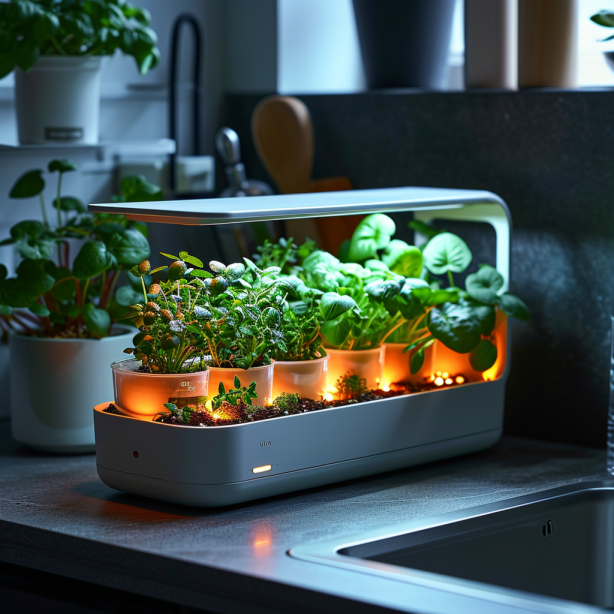
There are several types of hydroponic systems used to grow plants without soil.
Nutrient film technique (NFT) trickles a thin film of nutrient solution over roots.
Great for leafy greens!
Deep water culture (DWC) suspends plants on styrofoam rafts in oxygenated water with nutrients.
Ebb and flow systems flood the grow tray with solution then drain.
I use a simple wick system to grow herbs on my balcony – wicks draw up nutrients from the reservoir.
The most high-tech is aeroponics, misting exposed roots with nutrients.
Aeroponics yields the most but needs more equipment.
I visited an aeroponic vertical farm that grows strawberries stacked in towers!
Choosing the right hydroponic system depends on factors like crop type, scale and environment.
Small home systems work great for salad greens while commercial hydroponic farms need large-scale solutions.
As long as the roots get oxygen, nutrients and water, plants can grow healthy and strong.
It’s incredible how versatile hydroponic technology is – adapting to crops, spaces and conditions for sustainable food production.
From indoor city gardens to rural greenhouses, hydroponics offers efficient, innovative ways to cultivate bountiful harvests.
Latest Advancements in Hydroponics Technology
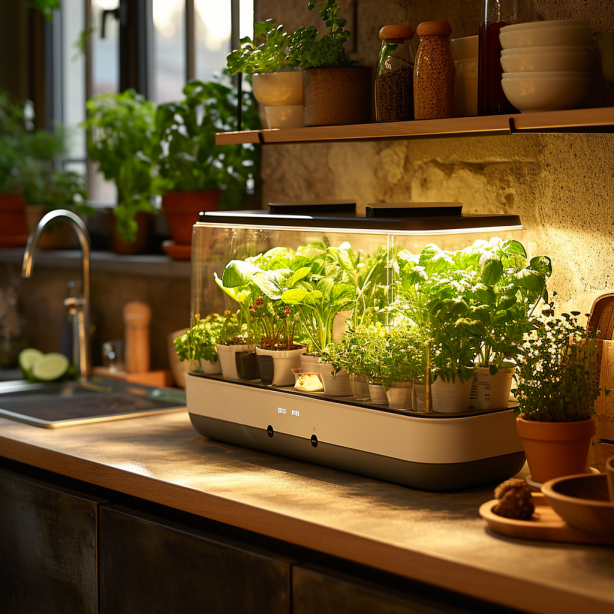
Exciting innovations are enhancing hydroponic productivity and efficiency.
High-tech LED lights now optimize light spectrum for plant growth and yields.
Sensor systems automate monitoring of factors like pH, temperature and moisture for hands-off management.
I recently learned about aquaponics – combining hydroponics with aquaculture…
…to cultivate fish and plants symbiotically! The fish waste fertilizes plants while plants filter water for the fish.
Talk about sustainable food production!
The Future Potential of Hydroponics
With climate concerns and food shortage crisis, hydroponics offers a sustainable solution for future food demands.
Hydroponics can produce higher yields with 90% less water than traditional farming, using less land.
It is the future of agriculture!
As innovations continue, I believe hydroponics adoption will grow exponentially across the world.
Imagine cities with commercial vertical farms using hydroponics…
…to provide fresh, local produce! We are entering an era of self-sufficient…
…urban agriculture enabled by hydroponic technological advancements.
An exciting future lies ahead as hydroponics transforms how we cultivate bountiful, nutritious foods.
Frequently Asked Questions
Is hydroponic food as nutritious as soil grown?
Hydroponically grown crops have a nutrient content that is similar to crops grown in soil.
The main differences are that hydroponically grown crops often…
… have higher quality control over their nutrient content and growing conditions compared to soil grown.
What are the benefits of growing vegetables hydroponically versus grown in soil?
There are several benefits to growing hydroponically versus in soil.
Hydroponic growers have more control over the growing environment…
… and can precisely deliver water and nutrients to plant roots.
This allows year-round production and higher yields even in places without good soil.
Hydroponic systems also use less water and space.
Is growing food hydroponically more environmentally sustainable than traditional agriculture?
Growing food using hydroponic or vertical farming techniques can be…
… more environmentally sustainable than traditional agriculture depending on the specific methods used.
Hydroponic growing uses less land, water, and pesticides than soil-based growing.
However, hydroponic systems also consume energy to operate lights, pumps, etc.
Overall environmental impact depends on the source of energy and other factors.
What types of plants can be grown hydroponically?
Many different types of hydroponic crops can be grown, including hydroponic vegetables…
… like tomatoes, peppers, lettuce, herbs and nuts as well as edible plants like…
Strawberries.
Almost any plant can be grown hydroponically as long as its nutrient and environmental needs are met.
Common hydroponic crops include tomatoes, lettuce, cucumbers, berries and edible flowers.
Is the nutrient content of hydroponically grown produce the same as soil grown?
Several studies have shown the nutrient content of hydroponically grown crops to be similar to those grown in soil.
Precise control over nutrients in a hydroponic system allows…
… growers tailor their nutrient solutions to optimize plant health and nutrient density.
Overall, research indicates hydroponically grown crops can have a comparable…
… or even higher nutritional content than traditional soil-grown depending…
… on growing conditions and practices.
What types of hydroponic systems are commonly used for growing food?
The main types of hydroponic systems used for crop production include …
…deep water culture (DWC), nutrient film technique (NFT), ebb and flow systems, drip systems,
Aeroponics and grow media like rockwool, perlite or coconut fiber.
DWC, NFT and ebb & flow are popular for greens while…
… drip systems work well for tomatoes, cucumbers and other fruiting veggies.
Aeroponics is well-suited for high-value crops.
Is indoor hydroponic growing more productive than traditional outdoor farming?
Indoor growing allows precise control over critical factors…
… like light, temperature, humidity and pests – creating an optimized growing environment where crops can reach their full genetic potential.
This increased control enables indoor hydroponic and vertical farms to be far more productive per square foot than traditional outdoor farms.
Well-designed indoor operations produce higher yields year-round regardless of season or weather.
How does growing hydroponically compare to traditional agriculture in terms of crop production?
Hydroponic systems can produce significantly higher yields than…
… conventional agriculture on an annual basis, with the ability to harvest multiple crops in the same growing space per year.
Precise environmental control allows optimal and consistent growing conditions year-round.
Reports indicate some hydroponic growers achieve 10-30 times greater production per acre compared to field crops.
While setup and operating costs are higher, production efficiencies offer economic advantages over traditional methods.
What are some examples of top hydroponically grown crops for commercial production?
Some of the most popular crops commercially produced…
… using hydroponics are butterhead lettuce, cucumbers, tomatoes and edible flowers like roses.
Berries including strawberries are also well-suited.
Mixed greens, herbs and high-value specialty items like microgreens are other good candidates.
For indoor vertical farming, leafy greens tend to be top crops due to their high value, short growing time and stacking ability.
Root vegetables are challenging to grow hydroponically.
What is the quality of water used in hydroponic systems and how is it treated?
The quality of water used is critical in hydroponics.
municipal or well water needs to be treated and filtered to remove toxins, minerals, pathogens and other impurities before use.
Reverse osmosis and other techniques yield purified water…
…suitable for hydroponics with optimal nutrient absorption and plant health.
Recirculating hydroponic systems reuse and recycle filter-treated water to reduce water usage while maintaining purified quality through the growing cycle.
Conclusion
In conclusion, hydroponic farming offers immense benefits…
… over traditional soil cultivation – higher yields, land/water efficiency, safe and nutritious produce all year round.
As innovations advance, hydroponics adoption will continue rising to transform agriculture.
I believe hydroponics technology holds great promise to sustainably overcome global food challenges.
With incredible productivity in controlled environments, hydroponics can supplement field farming…
… to boost local access to pesticide-free greens, fruits and vegetables.
It is the future of food!
I am excited to see commercial vertical farms utilizing hydroponics to feed…
… communities nutritious, fresh produce, grown right in our own cities.
Indeed, hydroponics will shape the future of agriculture in groundbreaking ways.
References
- https://www.nal.usda.gov/farms-and-agricultural-production-systems/hydroponics#:~:text=Hydroponics%20is%20the%20technique%20of,%2C%20coconut%20coir%2C%20or%20perlite.
- https://ourlittlesuburbanfarmhouse.com/18-plants-you-can-grow-year-round-hydroponically/
Related Articles
- https://tophydroponicgarden.com/hydroponics-introduction/
- https://tophydroponicgarden.com/what-is-hydroponic-gardening/
- https://tophydroponicgarden.com/leafy-greens/
Was this helpful?

I’m Barrie L., a passionate hydroponic gardening enthusiast dedicated to cultivating thriving, soil-less gardens. With a focus on all things hydroponic, I share my expertise on innovative growing techniques and sustainable practices through my blog, tophydroponicgarden.com. As a seasoned hydroponics specialist, my goal is to inspire and guide fellow gardeners in harnessing the power of water-based cultivation for bountiful and eco-friendly harvests. I’m also an author of the book “Hydroponics For Absolute Beginners: Your Step By Step Guide For How To Create An Hydroponics System At Home Without Soil, For Growing Vegetable, Fruit And Herbs.” which is sold on Amazon. Join me on a journey of redefining the way we cultivate plants, one nutrient-rich solution at a time. Happy growing!

